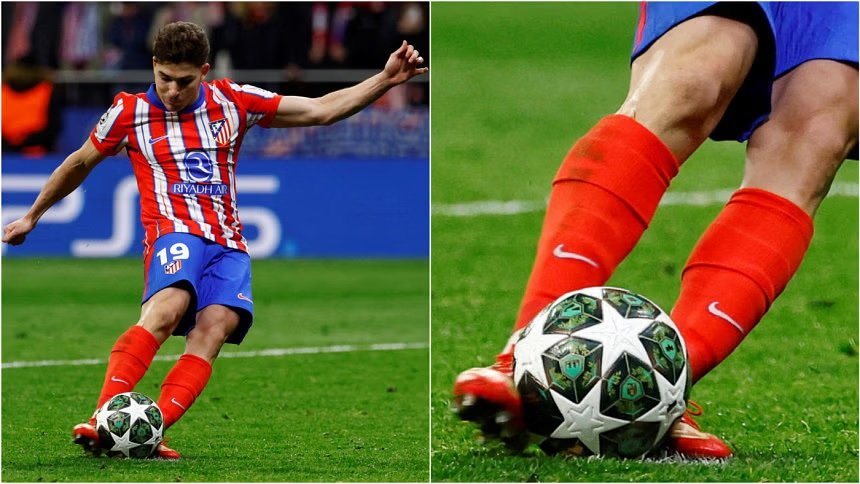Real Madrid extended their dominance over city rivals Atletico Madrid in the Champions League, winning for the fifth time in as many encounters. Their latest victory came via a 4-2 win on penalties after the last-16 tie ended in a 2-2 aggregate scoreline.
The key moment of controversy in the match was Alvarez's penalty, which was ultimately ruled as a miss.
The Incident
Alvarez stepped up for Atletico's second penalty after Real Madrid's Kylian Mbappe, Jude Bellingham, and Atletico's Alexander Sorloth had already converted. As Alvarez ran towards the ball, he slipped, sending his kick high. Despite the slip, the Argentine forward kept his shot on target, as the ball flew under the bar and into the roof of the net.
The VAR Intervention
Confusion arose in the moments that followed. Before Federico Valverde could take Real Madrid's next penalty, referee Szymon Marciniak halted play for a VAR review.
The review aimed to determine whether Alvarez had touched the ball twice after slipping. While initial replays broadcast worldwide were inconclusive, the VAR found evidence that Alvarez's left foot had made contact with the ball before he struck it with his right.
The final VAR decision confirmed: "Atleti player, No. 19, double touched the ball when the penalty kick was taken."
The Aftermath
Referee Marciniak signaled the double touch by holding up two fingers, but the decision was not immediately communicated to the stadium. Atletico fans, unaware of the ruling, continued celebrating despite their team now trailing 2-1.
A clearer replay angle, captured from behind the goal and released nearly an hour after full-time, showed that Alvarez's sliding left foot had nudged the ball onto his right foot before the strike.
Real Madrid goalkeeper Thibaut Courtois later revealed that he had sensed an irregular touch and informed the referee.
"I sensed that Alvarez touched the ball twice, and I told the referee," Courtois said. "It's not easy to see, and it's bad luck for them."
Meanwhile, CBS Sports' FIFA rules expert Christina Unkel explained that ball-tracking technology contributed to the decision.
"The rule is simple and straightforward – if the ball is touched twice, it's an infringement. Additionally, VAR has access to semi-automated offside technology, which helps detect contact with the ball at the precise moment of impact," Unkel explained.








